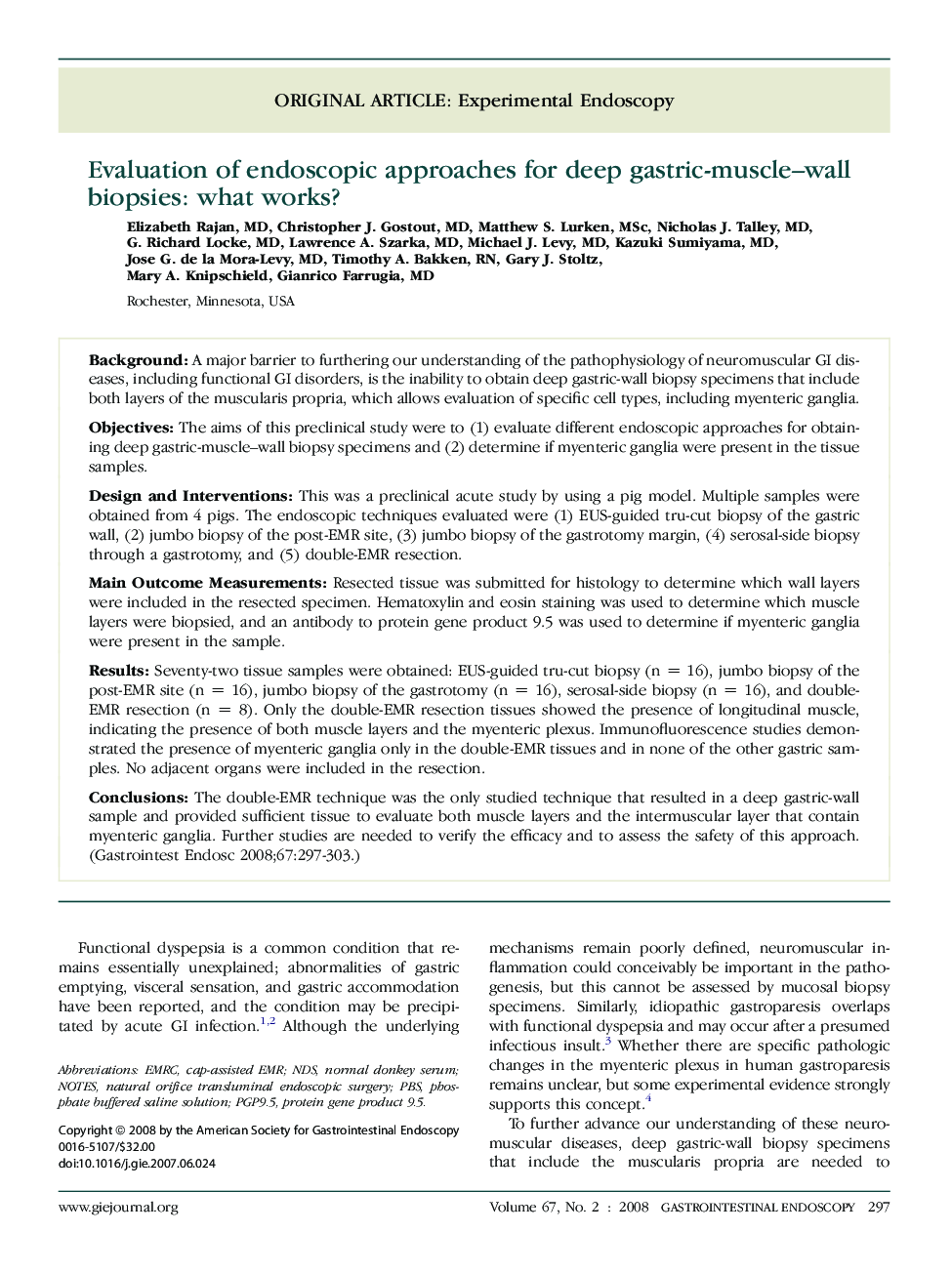| کد مقاله | کد نشریه | سال انتشار | مقاله انگلیسی | نسخه تمام متن |
|---|---|---|---|---|
| 3307974 | 1210393 | 2008 | 7 صفحه PDF | دانلود رایگان |

BackgroundA major barrier to furthering our understanding of the pathophysiology of neuromuscular GI diseases, including functional GI disorders, is the inability to obtain deep gastric-wall biopsy specimens that include both layers of the muscularis propria, which allows evaluation of specific cell types, including myenteric ganglia.ObjectivesThe aims of this preclinical study were to (1) evaluate different endoscopic approaches for obtaining deep gastric-muscle–wall biopsy specimens and (2) determine if myenteric ganglia were present in the tissue samples.Design and InterventionsThis was a preclinical acute study by using a pig model. Multiple samples were obtained from 4 pigs. The endoscopic techniques evaluated were (1) EUS-guided tru-cut biopsy of the gastric wall, (2) jumbo biopsy of the post-EMR site, (3) jumbo biopsy of the gastrotomy margin, (4) serosal-side biopsy through a gastrotomy, and (5) double-EMR resection.Main Outcome MeasurementsResected tissue was submitted for histology to determine which wall layers were included in the resected specimen. Hematoxylin and eosin staining was used to determine which muscle layers were biopsied, and an antibody to protein gene product 9.5 was used to determine if myenteric ganglia were present in the sample.ResultsSeventy-two tissue samples were obtained: EUS-guided tru-cut biopsy (n = 16), jumbo biopsy of the post-EMR site (n = 16), jumbo biopsy of the gastrotomy (n = 16), serosal-side biopsy (n = 16), and double-EMR resection (n = 8). Only the double-EMR resection tissues showed the presence of longitudinal muscle, indicating the presence of both muscle layers and the myenteric plexus. Immunofluorescence studies demonstrated the presence of myenteric ganglia only in the double-EMR tissues and in none of the other gastric samples. No adjacent organs were included in the resection.ConclusionsThe double-EMR technique was the only studied technique that resulted in a deep gastric-wall sample and provided sufficient tissue to evaluate both muscle layers and the intermuscular layer that contain myenteric ganglia. Further studies are needed to verify the efficacy and to assess the safety of this approach.
Journal: Gastrointestinal Endoscopy - Volume 67, Issue 2, February 2008, Pages 297–303